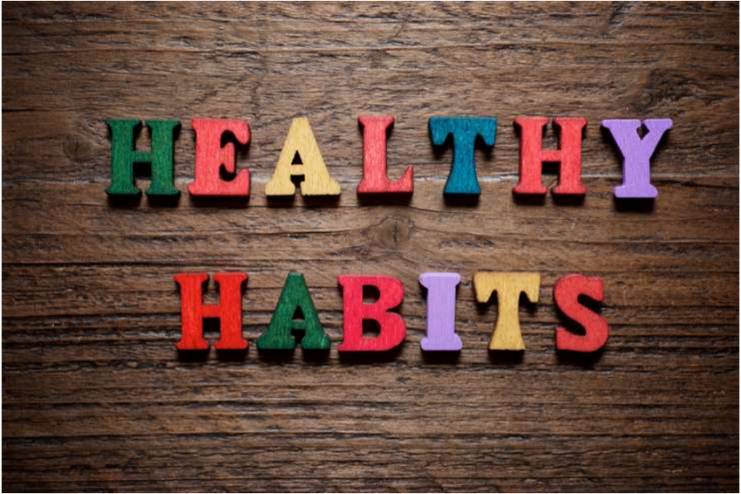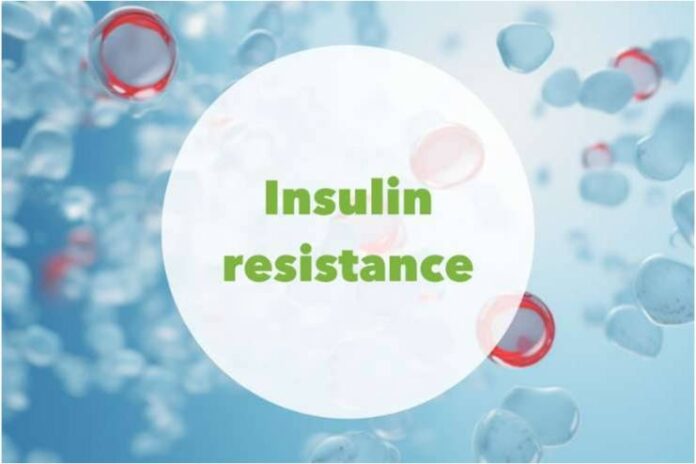Affiliate Disclaimer
Some links in this article are affiliate links. We may earn a small commission if you make a purchase through these links, at no extra cost to you. We only recommend products we find useful to our readersInsulin resistance is a major health concern for children and adolescents. This disorder causes the body’s cells to become less sensitive to insulin. The statistics are startling: an increasing proportion of young people are at risk of developing insulin resistance, which can lead to more serious health problems like metabolic syndrome and type 2 diabetes.
Familiarity with insulin resistance’s symptoms, dangers, and long-term effects enables them to take proactive measures toward better lifestyles. Parents are crucial in protecting their children’s health because they may provide supportive environments and encourage candid conversations about diet and activity levels.
What is Insulin Resistance?
Insulin resistance is when the body becomes resistant to the insulin hormone, impeding its ability to absorb glucose into its cells. The sugars remain in the circulation as a result, which raises blood sugar levels. The pancreas increases insulin production when it detects an issue in the early stages of insulin resistance. This condition is known as reduced glucose tolerance and can result in hypoglycemia or low blood sugar. Eventually, though, the pancreas overworks itself and produces less insulin. As a result, there is an increase in the blood glucose levels and the development of prediabetes, which can lead to diabetes. Around 34.2 million Americans have diabetes, according to the CDC. Although the majority of patients with this chronic illness are adults, diabetes is becoming more common in younger individuals due to the rise in childhood obesity.
Type 2 diabetes and insulin resistance are not the same thing. Although type 2 diabetes is not always the result of insulin resistance, it is frequently a prelude to the latter. When type 2 diabetes develops, the body’s capacity to generate insulin gradually declines, leading to noticeably elevated blood sugar levels that necessitate medical attention. Insulin resistance is essentially the body’s alarm clock, alerting the body to the need for intervention to stop the disease’s progression into type 2 diabetes. It is essential to comprehend this difference for early intervention and efficient management.
Recognizing the Signs: Symptoms in Children and Adolescents

Identifying the signs of insulin resistance in kids and teenagers is essential to start treatment early. Diabetic symptoms are comparable in children, teenagers, and adults. While both types of diabetes share some similar symptoms, they can be distinguished from one another by a few key characteristics. Parents should visually check for dark patches of skin, especially around the neck and underarms, and skin tags, which are small, benign growths frequently found around the neck, armpits, or eyelids. These alterations in the skin may be apparent indicators of underlying metabolic problems.
Kids who have insulin resistance may be chronically exhausted or sluggish even after getting enough sleep. Dehydration can result from the body’s attempt to eliminate extra sugar through urine, which can cause excessive thirst and frequent urination. These symptoms are often written off as normal childhood behavior or mistaken for common illnesses like seasonal allergies.
Misinterpreting these indicators, however, can have serious consequences. Parents may fail to see the link between symptoms that don’t seem to have anything to do with one another and the likelihood of acquiring major illnesses like type 2 diabetes. By raising awareness of and recognizing these indications, parents may be proactive in ensuring their children receive the required examination and care, laying the path for a healthier future.
Nutrition Unpacked: Smart Choices for Young Minds
For kids and teenagers, in particular, navigating the realm of nutrition can be difficult. One of the most significant dietary traps parents encounter is the popularity of processed meals and sugary snacks. These foods raise your risk of developing insulin resistance because they spike your blood sugar. Instead, nourishing growing minds with entire, nutrient-rich foods is critical to their long-term well-being.
Introducing easy recipes suitable for children can have a significant impact. A tasty and nutritious smoothie made with spinach, bananas, and Greek yogurt can be made. It will increase insulin sensitivity while also feeling incredibly creamy. Nut butter, oats, and honey are combined to make homemade energy bites, a whole-grain snack that gives you sustained energy without crashing.
Furthermore, it is impossible to exaggerate the value of family dinners. Creating engaging mealtime experiences helps kids discover new sensations and develop a healthy connection with food. Involving kids in the planning and preparing meals can increase their interest in and enthusiasm for eating healthy. Families can create enduring habits that promote improved health and well-being by choosing wholesome food together, giving kids the knowledge and motivation to make wise nutritional choices as they grow older.
The Role of Schools: Partnering with Educators for Healthy Habits

Schools are vital allies in the battle against insulin resistance because they significantly influence how children and teenagers behave regarding their health. Schools can drastically lower the amount of sugary and processed food that students eat by introducing healthy lunch programs that emphasize fresh fruits, vegetables, and whole grains. Furthermore, requiring physical activity encourages kids to move, which improves their insulin sensitivity and general health. You can achieve this through organized gym programs, daily recess, or after-school sports.
Active participation in school boards or parent-teacher associations (PTAs) allows parents to advocate for healthier school environments. They could suggest programs such as “healthy eating weeks,” in which students learn about nutrition through interactive exercises and culinary displays. Organizing workshops with neighborhood nutritionists can also assist in educating families about choosing healthier foods.
In addition, parents can help school gardens, which teach kids how to cultivate their produce and help them develop a sense of control over what they eat. Communities that enable families and educators to work together may establish an atmosphere that prevents insulin resistance and encourages lifetime healthy habits.
See Let’s Eat Healthy & Action for Healthy Kids for additional suggestions on promoting health in schools.
Emotional Well-Being: The Psychological Impact of Insulin Resistance

Insulin resistance has a substantial impact on mental health in addition to physical health, especially in children and adolescents. Anxiety and dissatisfaction may result from their inability to control their weight, food preferences, and possible health issues. Children may suffer from low self-esteem, loneliness, or feeling different from their classmates, particularly in a culture that frequently promotes physical health and thinness. The emotional toll might appear in several ways, such as mood swings or social disengagement.
Psychological issues must be addressed for comprehensive care. Kids can learn coping mechanisms through counseling. Support groups—like those provided by the American Diabetes Association—offer forums for families dealing with comparable issues to connect and share experiences.
Furthermore, Mental Health America and other online organizations provide helpful tools and information on mental health assistance, enabling families to work through the emotional complications. Families who prioritize emotional well-being can help their children develop a more positive outlook on life, allowing them to succeed in all aspects of their lives.
Conclusion
Managing complex insulin resistance issues in kids and teenagers necessitates a holistic strategy that includes education, dietary habits, and psychological assistance. Parents can play a critical part in securing their children’s futures by being aware of warning signals and encouraging healthy habits at home and in schools. Families, educators, and communities can establish a supportive atmosphere by working together, encouraging youth to enjoy their health journey and pave the way for a whole and active life.
References
- https://kidshealth.org/en/parents/insulin-resistant.html
- https://www.toplinemd.com/pemc-florida/insulin-resistance-what-parents-need-to-know-and-how-to-help/
- https://healthcareswfl.org/what-parents-should-know-about-diabetes/
- https://www.medicalnewstoday.com/articles/284974
- https://www.cdc.gov/diabetes/php/data-research/index.html
- https://academic.oup.com/jcem/article/95/12/5189/2835178
- https://www.merckmanuals.com/professional/pediatrics/endocrine-disorders-in-children/diabetes-mellitus-in-children-and-adolescents#Types_v89687520
- https://www.healthline.com/health/diabetes/insulin-resistance-symptoms#symptoms
- https://www.webmd.com/diabetes/diabetes-insulin-resistance-diet
- https://www.healthline.com/health/diabetes/insulin-resistance-diet
- https://www.nytimes.com/2023/10/03/well/live/reverse-insulin-resistance.html
- https://www.eatingwell.com/article/8027946/meal-plan-for-insulin-resistance/
- https://www.nebraskamed.com/health/conditions-and-services/diabetes/5-best-foods-to-improve-insulin-resistance
- https://med.stanford.edu/news/all-news/2021/09/insulin-resistance-major-depressive-disorder.html
- https://www.ncbi.nlm.nih.gov/pmc/articles/PMC6166557/
- https://www.ncbi.nlm.nih.gov/pmc/articles/PMC10752028/
- https://www.diabetes.org.uk/guide-to-diabetes/emotions/stress
- https://www.sciencedirect.com/science/article/pii/S0306453023008971
- https://sph.umich.edu/pursuit/2019posts/mood-blood-sugar-kujawski.html
- https://onlinelibrary.wiley.com/doi/abs/10.1111/ijn.13190
In this Article

















